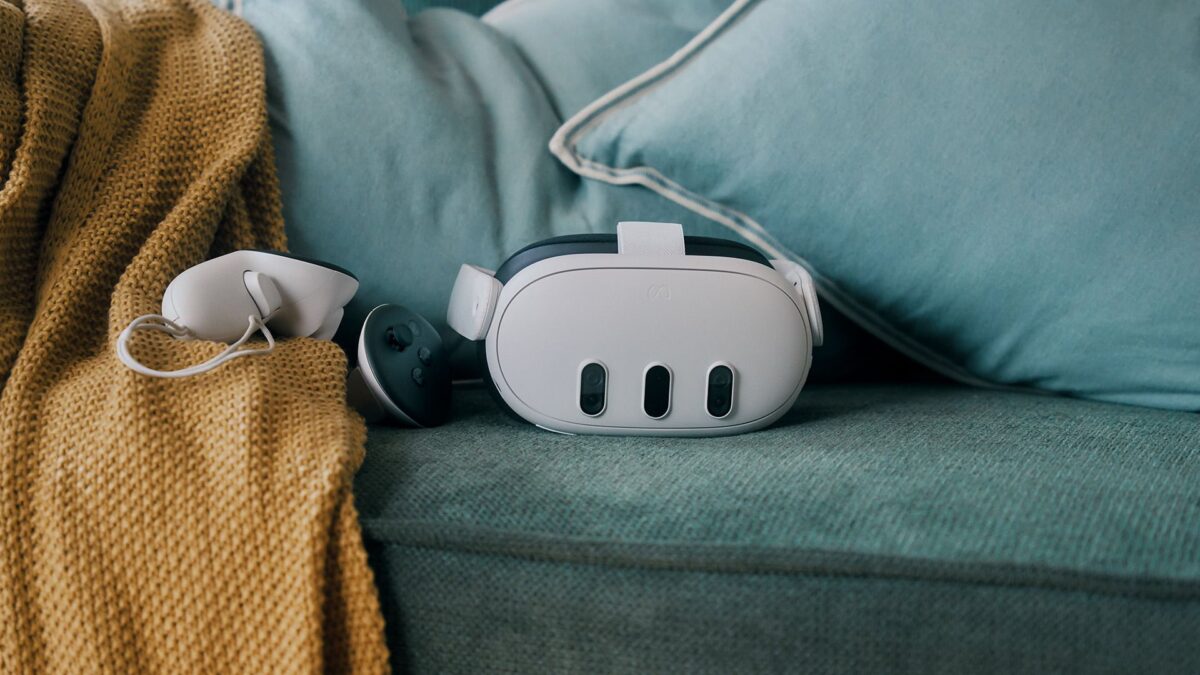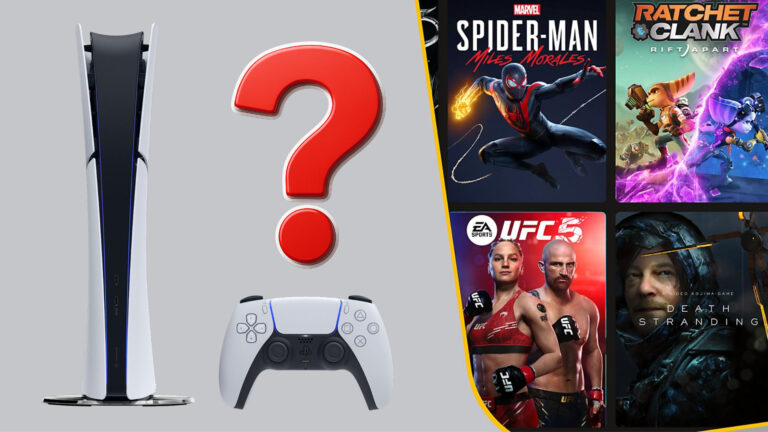High-quality lenses, mixed reality, and a massive library of games: Even in 2025, the Meta Quest 3 remains one of the best wireless VR headsets out there. But is it still worth the investment — or should you wait for its successor? Our guide helps you decide.
If you’re planning to pick up a VR headset in 2025, it’s hard to look past the Meta Quest 3. While the Meta Quest 3S offers a much cheaper alternative, the Quest 3 remains Meta’s most versatile headset — and for good reason. We’ll walk you through who should buy it, what advantages it brings, and when you might be better off choosing an alternative.
Meta Quest 3: Specs and Features at a Glance
- Pancake lenses, 2,064 × 2,208 pixels per eye, Snapdragon XR2 Gen 2, color passthrough with depth sensor, and more
The biggest upgrade over the Quest 2 is its optics: Instead of Fresnel lenses, it uses modern pancake lenses, which deliver edge-to-edge clarity across the entire image. The “sweet spot” — the area where the picture looks sharpest — is much larger than on most headsets. The result: no god rays, barely any screen-door effect, rich colors, high sharpness, and a realistic sense of depth.
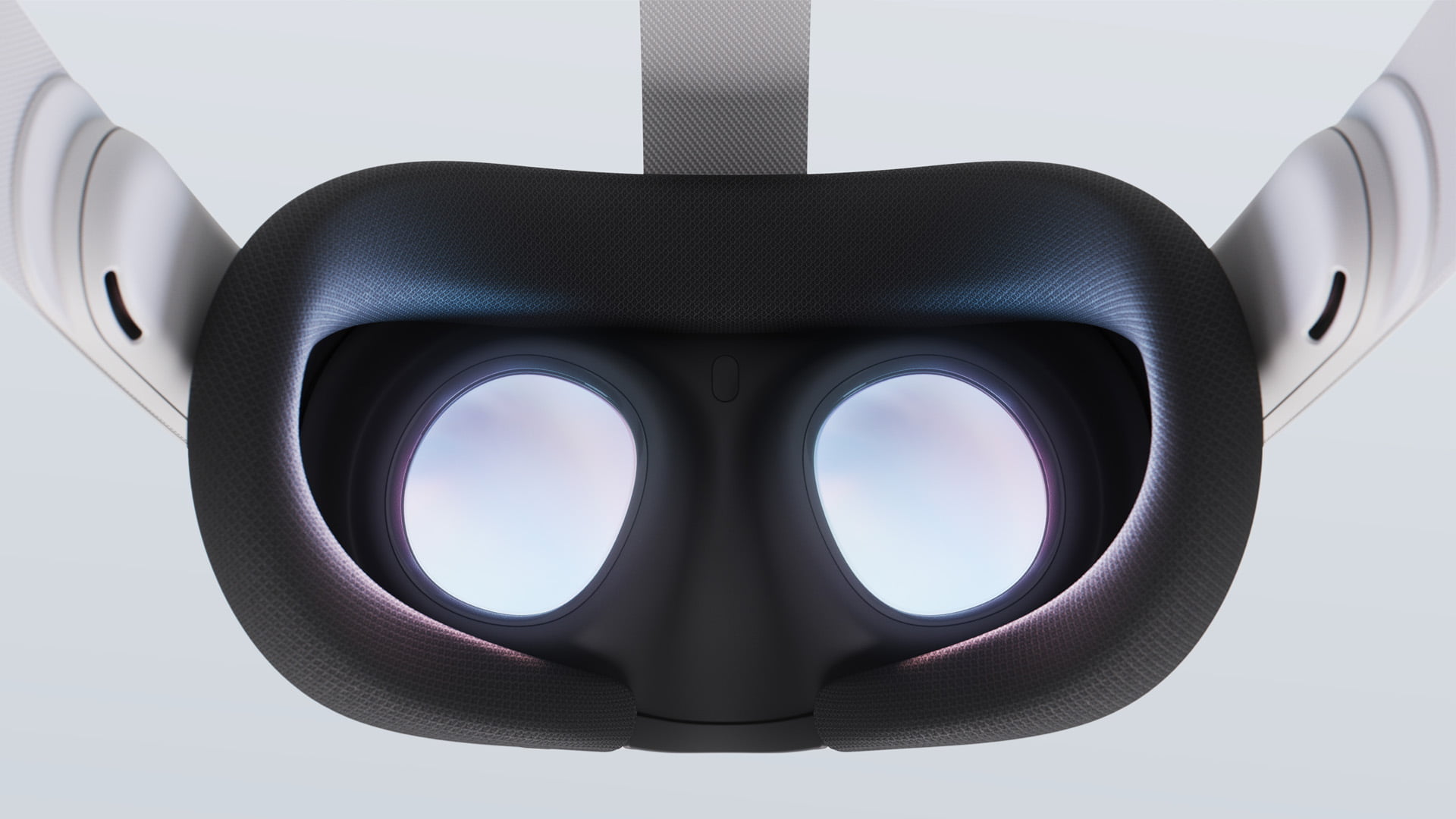
The displays offer a resolution of 2,064 × 2,208 pixels per eye, powered by the Snapdragon XR2 Gen 2 chip, which is significantly faster than the Quest 2’s processor. Thanks to RGB cameras with a depth sensor, the Quest 3 delivers impressive mixed reality experiences, letting digital objects be placed naturally in your environment. Latency is low enough that you can walk around, open doors, or work on your PC without removing the headset.
That said, passthrough resolution isn’t razor-sharp throughout and clearly trails the much pricier Apple Vision Pro. In low light, the passthrough image gets noisy, and you may notice some warping around edges and objects. Still, the Quest 3 delivers one of the best mixed reality experiences currently available.
The Touch Plus controllers offer precise tracking and improved ergonomics compared to earlier models, which still required bulky tracking rings. Hand tracking also works reliably now, though it still lags behind specialized systems. Switching between controller and hand tracking is automatic, though occasional delays can occur.
- Important: Binocular overlap refers to the portion of the VR field of view where both eyes see the same image — a key factor for depth perception, though highly subjective. Ideally, the brain can easily create a 3D image at 90–100 degrees horizontally, or 70–80% of the horizontal field of view. Below 80 degrees (or about 65–70%), comfort and immersion can drop significantly. On the Quest 3, overlap is estimated at 65–70% (around 70–75 degrees). Some users find this limiting, but since perception varies individually, the only real way to know is to try the headset yourself.
Weaknesses of the Meta Quest 3
- Short battery life, limited comfort, pricey accessories
For all its technical strengths, the Quest 3 has its drawbacks. Battery life is still short, lasting around two hours per charge. The built-in speakers sound louder and punchier than before, but can distort at higher volumes. The bigger issue is comfort in the default setup.
The included fabric head strap can dig in uncomfortably, leaving some users with forehead or back-of-head pain. If you play regularly, an upgrade like the Elite Strap is practically a must. The price also adds up quickly: the 512 GB model runs about $499 / £469 / €549, and essential add-ons like a strap with a built-in battery push the cost much higher. Official Meta accessories in particular are notoriously expensive.
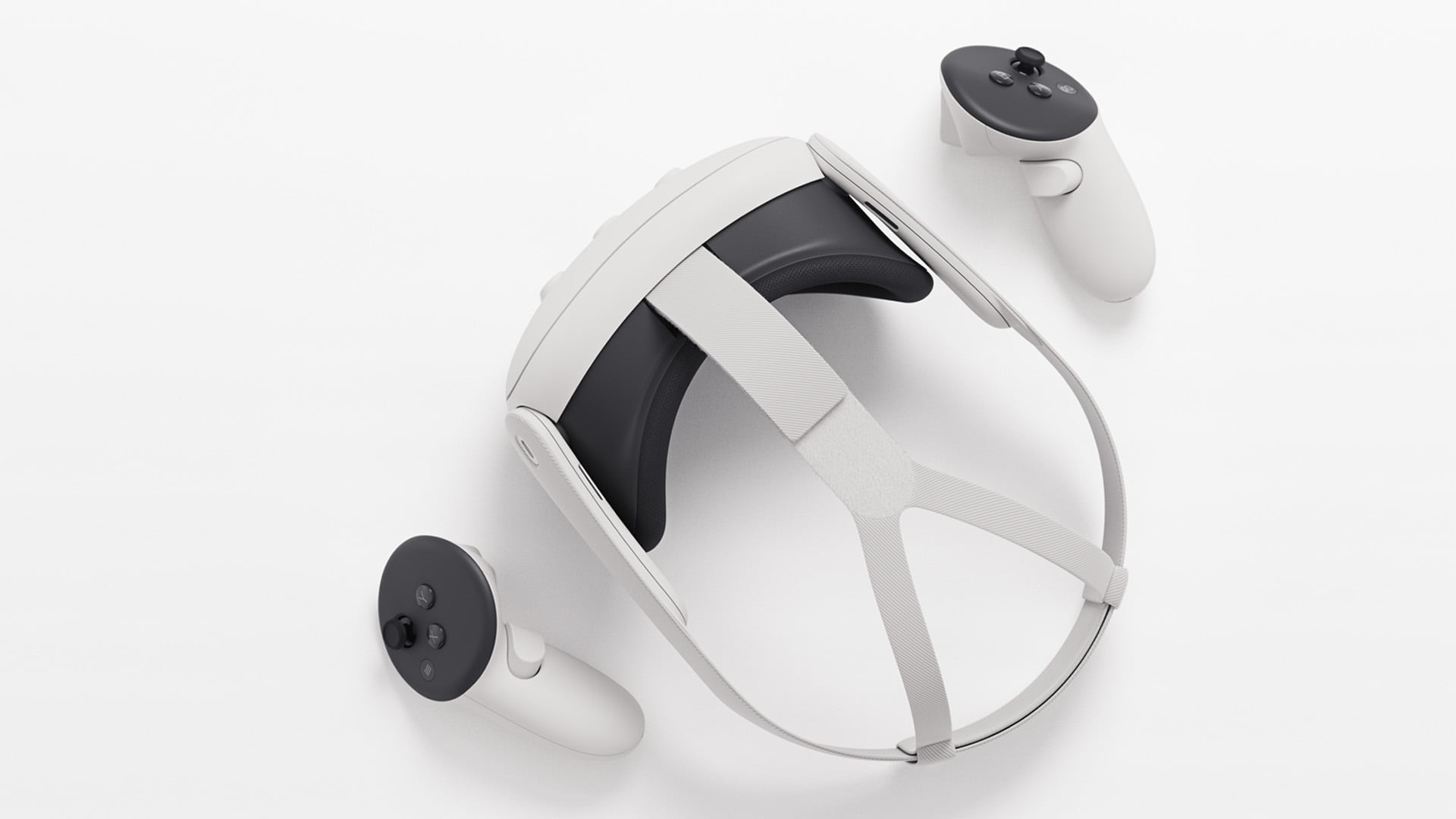
How Much Does the Meta Quest 3 Cost?
- Meta Quest 3 costs $499.99 / £469 / €549 (MSRP)
In 2024, Meta discontinued the 128 GB entry-level version, leaving the 512 GB model as the standard option at a permanent price cut of $499 / £469 / €549. The cheaper Quest 3S starts at $299 / £289 / €329 but compromises noticeably on lens quality, comfort, and display performance.
VR Games and PC-VR: What the Quest 3 Offers
- Huge app store, SteamVR support, strong exclusives
The Quest 3 gives you access to the largest consumer VR game library on the market. It supports all Quest 2 titles and adds new exclusives like Batman: Arkham Shadow, Asgard’s Wrath 2, and the upcoming Marvel’s Deadpool VR. Mixed reality apps are also growing rapidly, taking advantage of the Quest 3’s camera and processing power.
It’s also fully PC-VR compatible: With a powerful gaming PC, you can connect via Link cable or wireless AirLink to play SteamVR titles like Half-Life: Alyx — with surprisingly stable performance and solid image quality.
- Tip: The Quest Games Optimizer can further boost performance — raising resolution, improving frame rates, and fine-tuning visuals depending on the game. It’s aimed at advanced users, but the difference is noticeable.
Meta Quest 3 vs. Quest 3S
When compared to the cheaper Meta Quest 3S, the difference is clear: both use the same chipset and offer similar mixed reality functions. The key difference is visual quality. The Quest 3 has premium pancake lenses with continuously adjustable IPD (interpupillary distance), a slightly sharper display, better comfort, and a headphone jack.
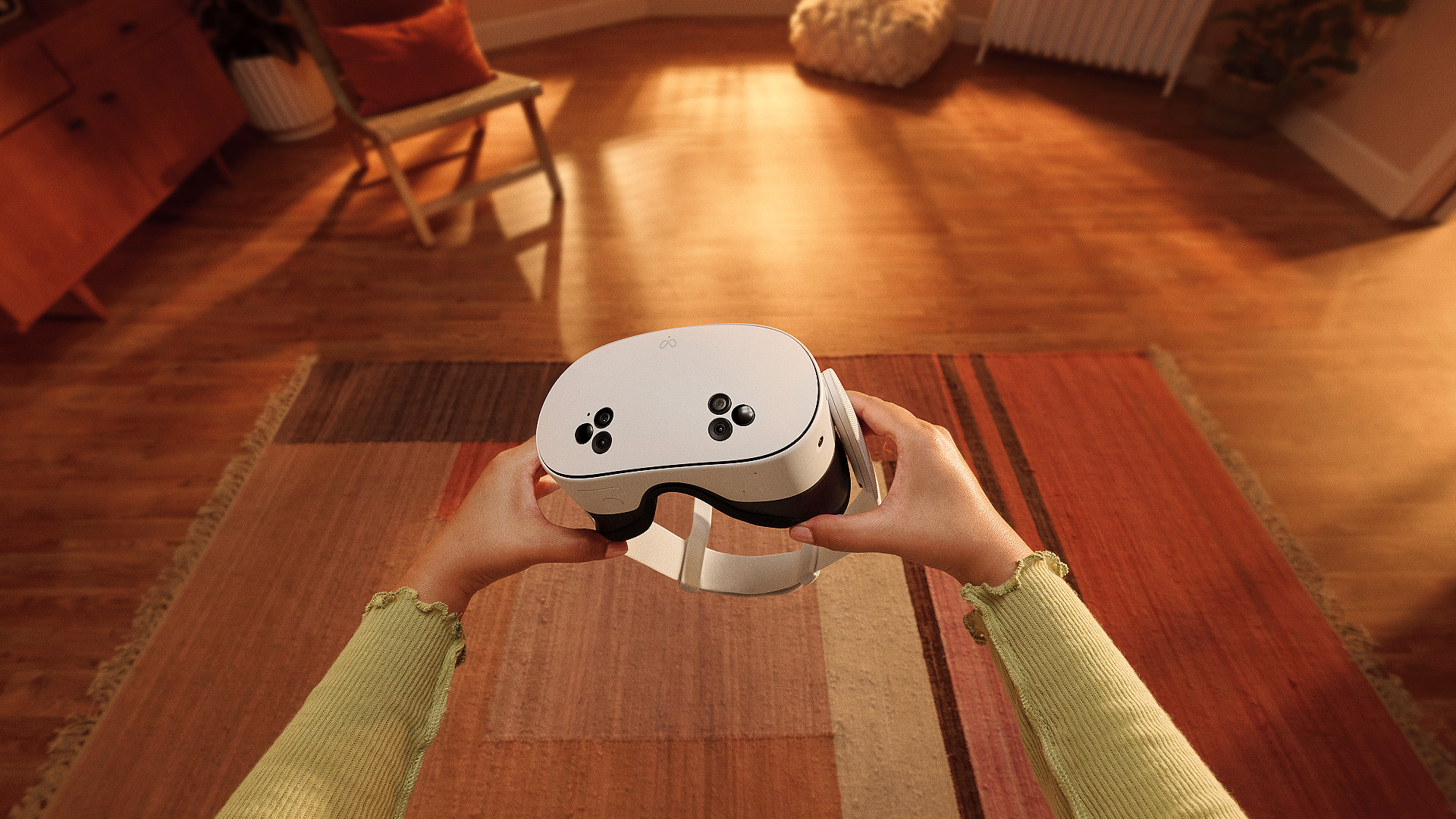
The Quest 3S, on the other hand, uses older Fresnel lenses with a smaller sweet spot and more blur around the edges. It only offers three fixed IPD settings and has a slightly bulkier design. Still, for beginners on a tight budget, it’s a solid entry point since the software library is identical.
Meta Quest 3 vs. Pico 4 Ultra
Against the Pico 4 Ultra, the Meta Quest 3 still comes out on top in 2025 as the more complete package for demanding VR/MR users. While Pico also runs on the Snapdragon XR2 Gen 2 and boasts a slightly higher display resolution of 2,160 × 2,160 pixels per eye, real-world performance tells a different story.
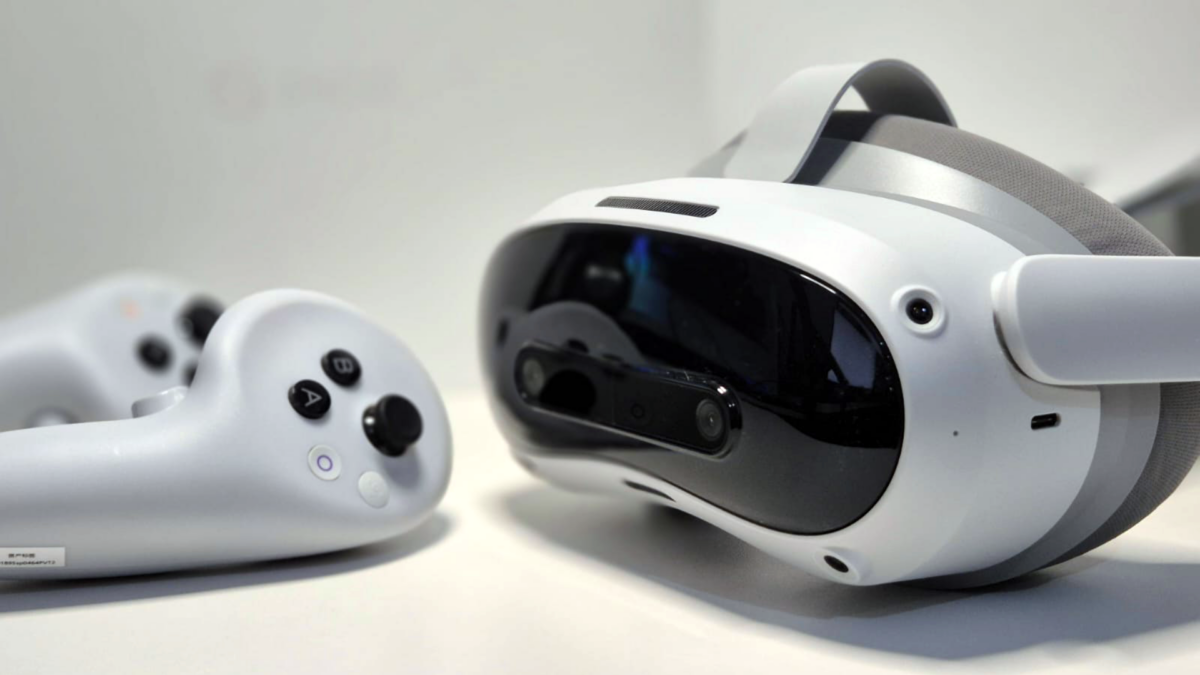
The Quest 3 delivers much better edge-to-edge clarity, keeping the image sharp all the way to the edges. On the Pico 4 Ultra, the picture stays sharp only in the sweet spot, while edges quickly blur and suffer from reflections and ghosting. This is especially limiting for mixed reality and productivity apps.
- Note: Binocular overlap on the Pico 4 Ultra is estimated at about 85% (around 90 degrees horizontally) — an excellent value!
Meta also wins on comfort and software: The Quest 3 can be customized with accessories like Elite Straps, while the Pico 4 Ultra suffers from a lack of third-party add-ons. Meta’s app store is also far larger, especially when it comes to VR games and MR apps. Pico’s library, despite improvements, remains limited.
The only real advantage of the Pico 4 Ultra is PC-VR performance: With SteamVR support and stable streaming over Wi-Fi or cable, it’s a good option for PC-VR gamers. As a standalone all-in-one headset, though, it lags behind the Quest 3.
- Few alternatives on the market: Other MR headsets like Apple Vision Pro cost more than triple and are aimed at pros and high-end users. The Pimax Crystal Light and Crystal Super are PC-VR only, while PlayStation VR2 isn’t standalone and requires a PS5 or PC.
Conclusion: Should I Buy Quest 3 Now or Should I Wait for the Quest 4 Instead?
The Meta Quest 3 is still the best choice for anyone who wants a powerful, standalone VR/MR headset with excellent image quality, the flexibility to switch between standalone and PC-VR, and access to a huge content library with regular software updates. Budget-minded users can go for the cheaper Quest 3S, but they’ll have to accept compromises in visuals and comfort. Since a full-fledged successor like the Meta Quest 4 isn’t expected until 2027 or 2028 — and other Meta or third-party XR headsets (from Asus or Lenovo) not before late 2026 — the Quest 3 is still a solid investment today. Expect it to remain a price-performance leader in VR for at least the next three years.
Bottom line: Even in 2025, the Meta Quest 3 is a clear recommendation for demanding users and remains the most balanced VR/MR headset under $1,000.
No related articles found.

